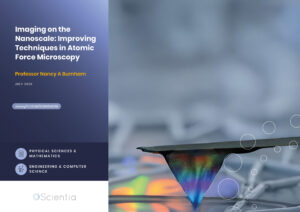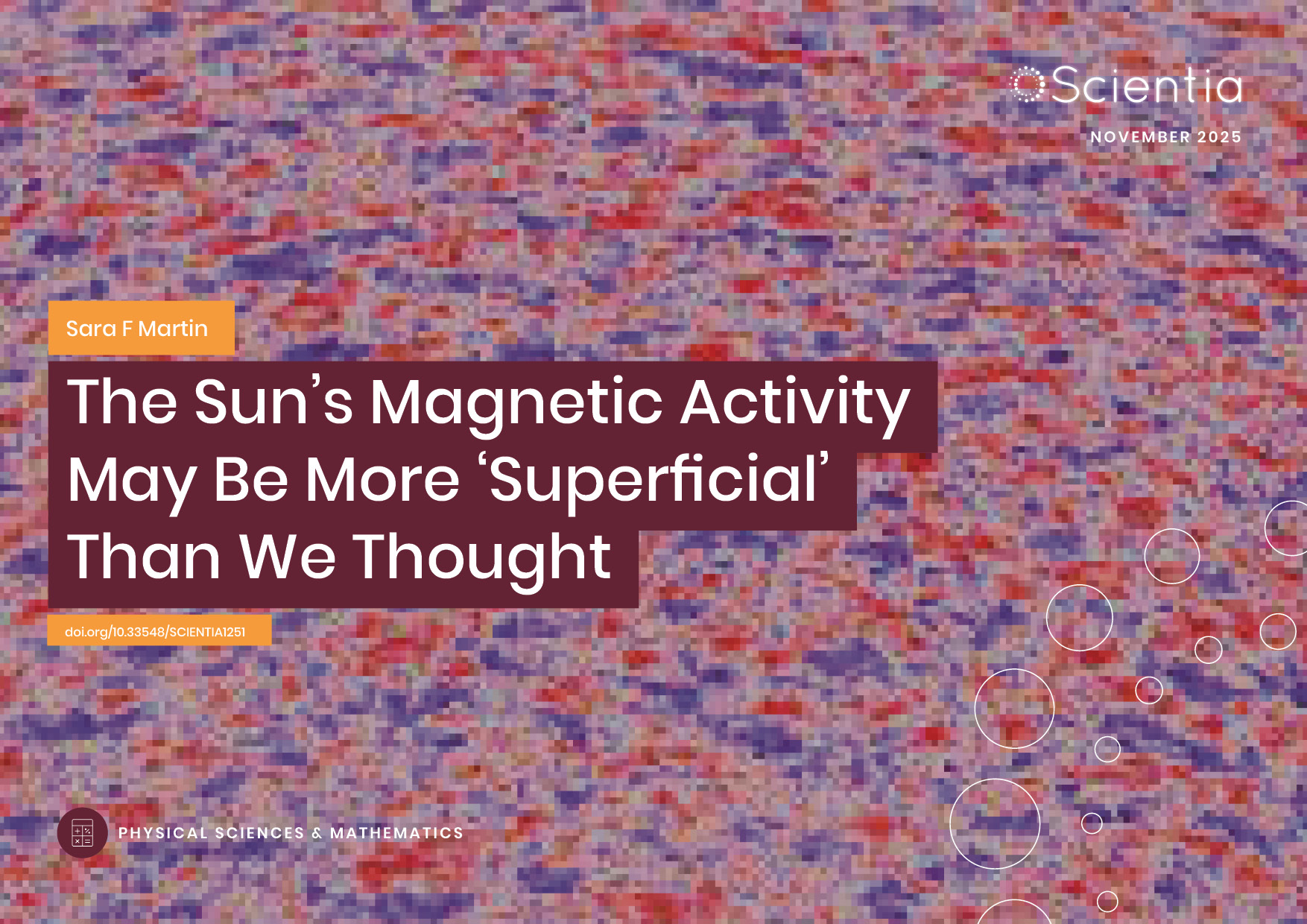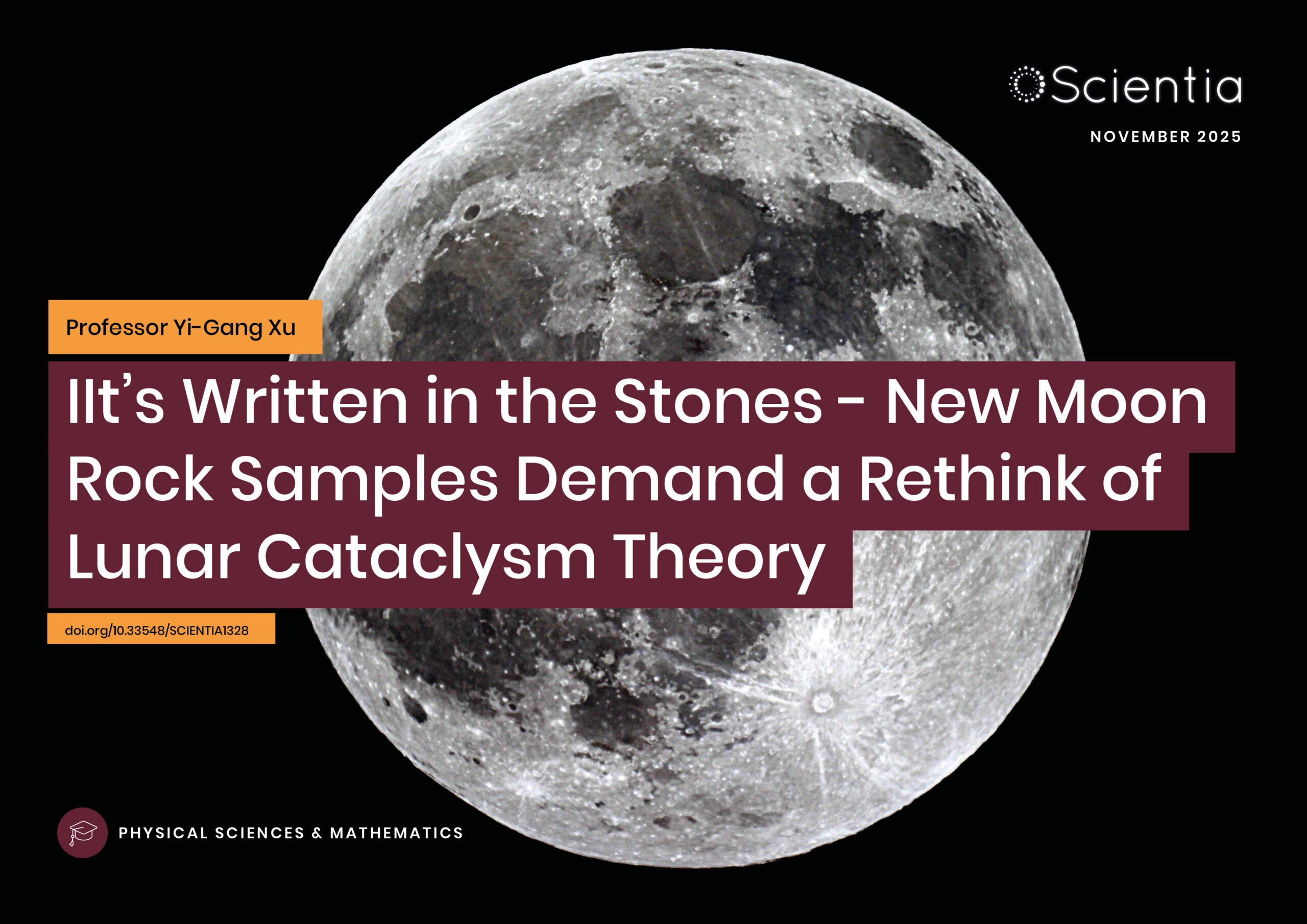Professor Nancy Burnham | Imaging on the Nanoscale: Improving Techniques in Atomic Force Microscopy
Article written by Imogen Forbes, MSci
Atomic force microscopy (AFM) provides the means to image surfaces with nanometre resolution, allowing scientists to look at the individual building blocks and forces that make up the world around us. Professor Nancy Burnham of Worcester Polytechnic Institute and her colleagues Lei Lyu and Lily Poulikakos at the Swiss Federal Laboratories for Materials Science and Technology (Empa) have worked on how we can reduce artefacts in these images and ensure they are accurately interpreted. By considering and applying these techniques, high-quality AFM research can be produced.
What is Atomic Force Microscopy?
Atomic force microscopy (AFM) is used to help us learn more about a diverse range of materials, from asphalt to biological samples, through accurately imaging the surface of the material. To carry this out, AFM uses a cantilever with a sharp tip on one end. The forces from the sample affect the tip, and the cantilever bends. The bending is detected by shining a laser onto the cantilever, and measuring the light reflected from it using a photodetector. The tip is then scanned over the whole sample, allowing an image to be built from the variation in the light detected at the photodetector.
Professor Nancy Burnham of Worcester Polytechnic Institute and her colleagues highlight the importance of the correct presentation and explanation of images from AFM. These images can contain artefacts, or undesirable patterns or distortions, which can either obscure the image or contribute to the result being misinterpreted. Their work offers practical solutions to help avoid these artefacts, thus improving the outcomes from AFM imaging.
Image Processing in AFM
With AFM, image processing techniques are often required to help process the data, but these can sometimes result in artefacts. Professor Burnham’s team identified how distortions can occur due to a technique called row alignment. They demonstrate this by imaging ‘bee’ structures in bitumen, which is used to bind asphalt. The bee structures are seen as regions of dark and light stripes in the image of the bitumen sample.
As the tip of the AFM set-up scans over a bee structure in a row, it may see some grey pixels due to the regions of the sample without a bee, followed by some lighter pixels as a result of the light stripe of a bee. In the next row, it may see some grey pixels, followed by some darker pixels as a result of the bee’s dark stripe. In a standard row alignment process, each row’s average pixel colour is aligned with the average greyscale colour in the image. This means that the rows which contain the lighter pixels are set to higher values, and the rows which contain the darker pixels are set to lower values, which incorrectly colours the grey background pixels around the bee. This creates a distorted, striped pattern in the image.
Professor Burnham’s team suggest a different processing technique. They eliminate curvature by using subtraction methods called second-order polynomial subtraction, and then they apply a median row alignment. This accounts for the most commonly occurring pixel values in a row rather than considering the whole image. This subtraction and median row alignment helps reduce the distortion around the bees in the image, and they can be more clearly observed.
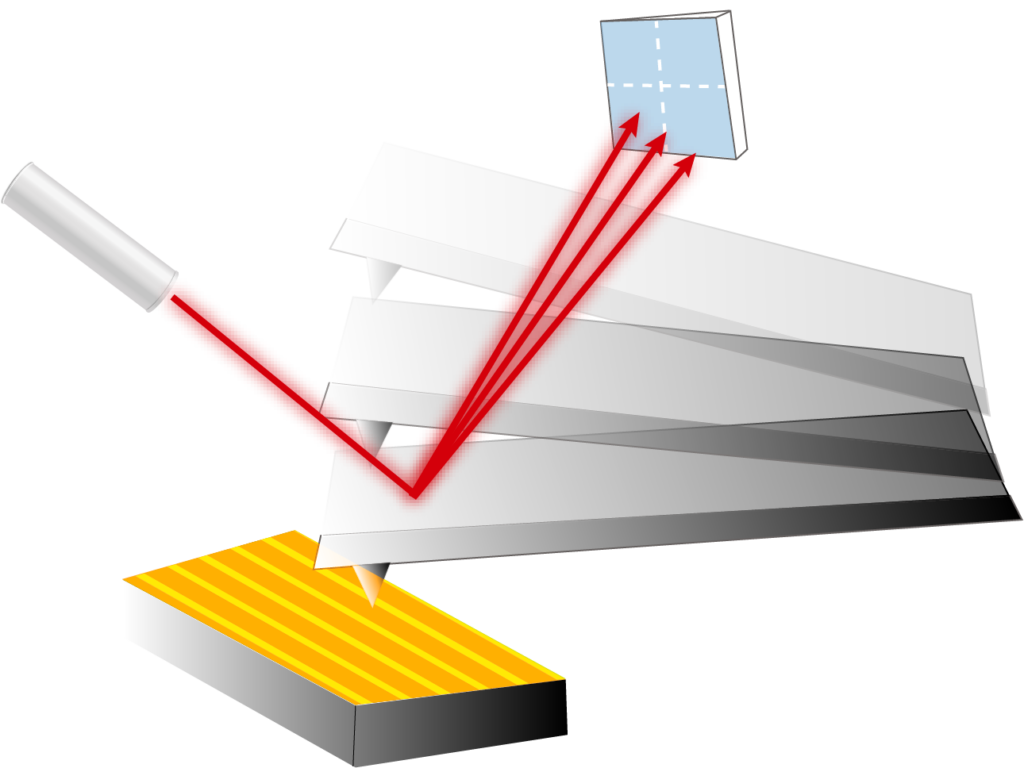
Using IR Light in AFM Set-Ups
The equipment used in AFM measurements can impact the images taken. Professor Burnham and her colleagues discuss AFM combined with infrared spectroscopy (AFM-IR), where, in addition to the scanning tip and cantilever of the AFM, the sample also absorbs infrared light. The absorbed IR light can be used to identify the chemical properties of the material, and it can cause the sample to expand. This expansion can be detected by using the cantilever and tip to measure changes in the sample’s height.
Professor Burnham and her team show how shining IR light on the sample can cause it to heat up. For some materials, this temperature change can result in the properties of the sample being lost. Importantly, if too high laser power is used, the bee structures can be melted in an asphalt sample. To prevent this, the team suggests both considering the impact of heating the sample and ensuring a suitable laser power is used to gain clear images without overheating.
When the sample is illuminated with IR light, the laser is offset at an angle to the sample. Any roughness on the surface will then cause shadows, stopping the IR light from shining evenly across the sample. Professor Burnham has demonstrated this by fabricating a replica of a rose petal – where we can see a lower IR response in the ‘valleys’ created by the roughness of the surface. Professor Burnham suggests how the sample can be tilted slightly to help illuminate the whole surface.
Using Force in AFM Set-Ups
Another AFM technique considered is Peak-Force Quantitative Nanomechanical Mapping (PF-QNM). This controls the forces applied to the tip and measures the forces on the system whilst scanning. Professor Burnham and her team highlight that the model used to fit this force data only applies when the material under test is stiff, the tip has a sufficiently steep curvature, and the tip-sample adhesion is low. Although not all tips and samples used fit these criteria, the researchers highlight how useful data can still be collected on samples that are being compared by using the same experimental conditions and AFM calibration. If different AFM set-ups need to be used, Professor Burnham suggests using a sample with known properties for calibration.
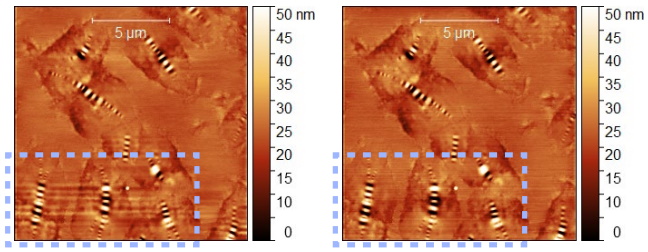
Professor Burnham’s team also identify how the structure of the AFM system itself can impact measurements. For example, if the sample is reflective, some of the laser light which is shone onto the cantilever may hit the sample and be reflected. Different sources of reflective light can cause interference at the photodetector, giving an oscillation in the force curve. This can be corrected for by applying a reflective coating to the cantilever to maximise the amount of light reflected from it to the photodetector. Similarly, the researchers highlight how measurements of the surface can be affected by the choice of cantilever stiffness and tip radius. The team shows how the imaging of a bee in an asphalt sample differs when the sample has a different curvature and suggests the ratio of sample curvature to tip radius, at which we need to start accounting for this in AFM image analysis.
Professor Burnham and her team have studied different AFM techniques and highlighted a range of aspects, from the curvature and temperature of the sample to image processing techniques, which may lead to artefacts or misrepresentations in the analysis of the data. By establishing methods to reduce the impact of these artefacts, this work helps those using AFM to produce high-quality images which can be correctly interpreted.
SHARE
DOWNLOAD E-BOOK
REFERENCE
https://doi.org/10.33548/SCIENTIA1266
MEET THE RESEARCHER
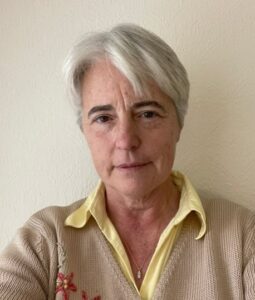
Professor Nancy A Burnham
Department of Physics, Worcester Polytechnic Institute, MA, USA
Professor Nancy Burnham gained her Bachelor’s degree in Physics from Colgate University in 1980 before moving to the University of Colorado, Boulder, where she attained her Master’s degree in 1985 and her PhD in Physics in 1987. Her work focuses on the characterisation of nanoscale materials, in particular, using atomic force microscopy. Throughout her career, Professor Burnham has held a number of prestigious academic positions, including a von Humboldt fellowship in Germany. In 2000, she joined Worcester Polytechnic Institute, where she is now a Professor of Physics. Professor Burnham’s work is widely cited in her field, and she has authored/co-authored over 100 publications. Her work has been recognised through many accolades, including appointment as an Institute of Physics of Ireland Lecturer in 2002 and Fellow of the AVS in 2010.
CONTACT
E: nab@wpi.edu
W: https://www.wpi.edu/people/faculty/nab
KEY COLLABORATORS
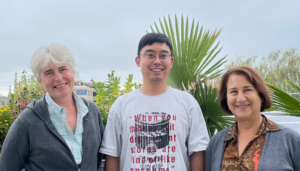
Dr Lei Lyu, Empa, Switzerland (now Chang’an University, Xi‘an)
Dr Lily Poulikakos, Empa, Switzerland (now retired)
FUNDING
Worcester Polytechnic Institute (partial sabbatical support)
Empa, Switzerland (access to facilities as a visiting scientist)
Swiss National Science Foundation, #IZSEZO_2094511_1
FURTHER READING
NA Burnham, L Lyu, L Poulikakos, Towards artefact-free AFM image presentation and interpretation, Journal of Microscopy, 2023, 291, 163–176. DOI: https://doi.org/10.1111/jmi.13193

REPUBLISH OUR ARTICLES
We encourage all formats of sharing and republishing of our articles. Whether you want to host on your website, publication or blog, we welcome this. Find out more
Creative Commons Licence (CC BY 4.0)
This work is licensed under a Creative Commons Attribution 4.0 International License. 
What does this mean?
Share: You can copy and redistribute the material in any medium or format
Adapt: You can change, and build upon the material for any purpose, even commercially.
Credit: You must give appropriate credit, provide a link to the license, and indicate if changes were made.
SUBSCRIBE NOW
Follow Us
MORE ARTICLES YOU MAY LIKE
Sara F Martin | The Sun’s Magnetic Activity May Be More ‘Superficial’ Than We Thought
Scientists have long debated where solar cycle magnetic fields come from—deep within its interior or closer to its surface. Compelling new evidence suggests these fields may originate much closer to the Sun’s visible surface than previously thought, with important implications for understanding our star’s complex magnetic behaviour. The Sun’s activity also holds important implications for exoplanets currently being discovered around many solar-like stars.
Dr Khaled Mnaymneh | Does a Boundary Exist Between Classical and Quantum Mechanics?
Physicists typically have two frameworks for considering mechanics – a classical picture, looking at larger-scale objects, or a quantum picture, considering things on a subatomic scale. Where the boundary between these two pictures lies is an open question. Dr Khaled Mnaymeh from National Research Council Canada and Carleton University argues that this boundary does not exist. Through his analysis of Bell’s inequality, configuration space, and counterfactual definiteness, his work highlights the importance of considering these foundational principles in our study of the world around us.
Dr Kenric Nelson | Modelling the Extreme: A New Technique for Training Risk-Aware Artificial Intelligence
Category 5 hurricanes, financial crashes, and global pandemics are just a few examples of rare events whose high risks necessitate understanding and mitigation. Developments in artificial intelligence (AI) could go a long way towards improving our ability to model and mitigate the impacts of such extreme events, but current training methods are often unable to deal effectively with outliers in data – which is exactly what extreme events are. If outliers are present in training data, they skew the AI’s expectations, but if they’re omitted entirely, models will wrongly assume they never occur. To address this shortcoming, the Photrek team, led by Dr Kenric Nelson, has developed a new training technique to design more robust AI systems that can cope with rare, extreme events.
Professor Yi-Gang Xu | It’s Written in the Stones – New Moon Rock Samples Demand a Rethink of Lunar Cataclysm Theory
A significant debate continues between scholars in the astronomical community regarding the early history of our solar system. It’s been hypothesised that the solar system experienced a dramatic cataclysm a short while —in cosmological terms— after the Earth and Moon solidified. Dubbed the Late Heavy Bombardment theory, disturbances in gas giant orbits may have caused a sudden hailstorm of comets and asteroids to be hurled towards the inner planets. Lunar rock samples collected from craters during Apollo missions seemed to support the idea, but new evidence is demanding a rethink.
Professor Yi-Gang Xu and his team examined samples recovered from the Chang’e-6 mission in 2024, and they suggest a more gradual change in the frequency of asteroid impacts, rather than a sudden, violent cataclysm.

